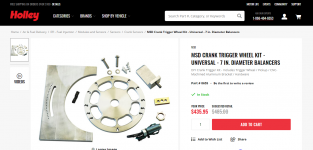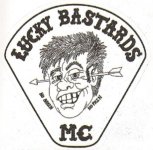About 1968 I had been working in a Motorcycle Machine shop for a couple of years. When the owners Dad who was in his 70,s at the time came in with a sheet of 1 1/4" T 6 Aluminum. He walked out latter that day with 4 connecting rods.
The next week he came back in with an ugly cast lump of Aluminum and did the finish milling, installing guides and seats and then ported and finished out a Rilley overhead valve replica cylinder head for a Ford Model B
Later in the year he went to Bonneville and went over 200 MPH in a WW2 Belly tank streamliner with his hand built Ford Model B.
He was old Man Vesco. I can't remember his first name. But I worked with his 2 sons, Don and Rick for over ten years as an apprientice mechanic and machinist..
It was a Great place to learn. I'll always be thankfull for the oportunity. I had lost my Dad at 12 and was kind of drifting in a bad direction till Don offered me a job at 15.
Don went 470 MPH in 2001,in his Turboshaft Helicopter engine powered 4 wheel drive car. He sadly passed away from cancer the following year before reaching his goal of 500 MPH. We were friends up till he passed,, He is sadly missed. He was one of the most tallented people I've ever known.
I was with hin in the 70's when he broke the Motorcycle Land Speed Record of 318 MPH. In a Streamlined Motorcycle called the Silver Bird, It had 2 Yamaha 750 CC Grand Prix Road Race two cycle 4 cylinder engines. He went on to break the record again with 2 1200 CC Kawasaki's later in the 70's after I moved to Nor Cal and started a family.
The car sat till 2013 when his younger brother Rick rebuilt the car and re-named it the "Turbinator 2" " It still has the helicopter Turbo shaft engine in a 4 wheel drive Sreamliner that Don built. Rick got the record for the Worlds Fastest Wheel Driven Vehicle in 2018 at 503 MPH
The Turbinator.
At 3 min and 29 seconds into the Silver Bird video, the Tall gangly Long haired kid pushing the tail was me at 24 years old.



